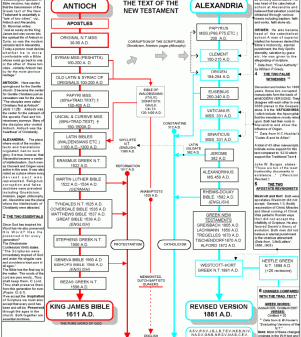April 26-28, 2006 may well be remembered as an historic occasion. This was the first Together for the Gospel conference. It was hosted by Mark Dever, Ligon Duncan, Albert Mohler, and C.J. Mahaney and included guest speakers R.C. Sproul, John Piper, and John MacArthur. But the conference was not about great men, it was about a greater message–the Gospel! The conference, attended by over 2800 people (mostly pastors) had a rare concern for both unity and doctrinal purity. It attempted to address the problems of denominational partisanship on the one hand and doctrinal paltriness on the other. Together for the Gospel was just that, a call for our unity to be in the most important and absolutely defining truths which are fundamental to the Gospel. True unity only exists around the true Gospel, and the true Gospel demands a true unity.
I am thrilled at how this conference exalts the Gospel as the true source of unity. As a former fundamentalist, I was inculcated with a knee-jerk reaction against virtually any call for unity. Why? Unity is most often trumpeted to the detriment of doctrinal purity. This does not have to be, but often is. My friend Nathan Pitchford has written an excellent article detailing how unity and doctrinal purity are not in opposition with one another at all, I recommend it highly.
 In my own opinion the fundamentalist solution to the problem of rampant ecumenism has its own glaring problems. In almost every sector of fundamentalism, to one degree or another, unity is sought in each and every doctrinal (and often practical) position. The result is minor doctrines and personal interpretations and preferences have been exalted to a level greater than the doctrinal truths essential to the Gospel itself! Rather than prizing the actual unity we have as fellow believer-partakers in our Divine Lord Jesus Christ’s glorious provision for our sins as an altogether adequate basis for a mutual fellowship and unity which welcomes each other in spite of our differing positions on comparatively minor points, the minor points we disagree define us as we esteem them of greater importance than our commonality in the Gospel. Our own applications of separation, views on baptism, and beliefs about the finer points of eschatology and ecclesiology and other doctrines become stumblingblocks to the real unity of the faith the One True Gospel calls us to, and the world is robbed of a clear witness to the Oneness of Christ and the Father, and of Christ and His Church, and ultimately God is denied a unified voice that glorifies His name (Eph. 4:3,13, Jn. 17:20-21, Rom. 15:5-7).
In my own opinion the fundamentalist solution to the problem of rampant ecumenism has its own glaring problems. In almost every sector of fundamentalism, to one degree or another, unity is sought in each and every doctrinal (and often practical) position. The result is minor doctrines and personal interpretations and preferences have been exalted to a level greater than the doctrinal truths essential to the Gospel itself! Rather than prizing the actual unity we have as fellow believer-partakers in our Divine Lord Jesus Christ’s glorious provision for our sins as an altogether adequate basis for a mutual fellowship and unity which welcomes each other in spite of our differing positions on comparatively minor points, the minor points we disagree define us as we esteem them of greater importance than our commonality in the Gospel. Our own applications of separation, views on baptism, and beliefs about the finer points of eschatology and ecclesiology and other doctrines become stumblingblocks to the real unity of the faith the One True Gospel calls us to, and the world is robbed of a clear witness to the Oneness of Christ and the Father, and of Christ and His Church, and ultimately God is denied a unified voice that glorifies His name (Eph. 4:3,13, Jn. 17:20-21, Rom. 15:5-7).
I did not have the joy of attending the conference, but I have been blessed by others descriptions of it in the blogworld. Let me share the blessing by sharing some of the pertinent links below.
CONFERENCE LINKS:
- TogetherfortheGospel.Org — The official website of the conference (they are planning another conference in April of 2008).
- Together for the Gospel’s Blog — This is a great blog where you can listen in as Mark Dever, C.J. Mahaney, Albert Mohler, and Ligon Duncan carry on a meaningful conversation on the Gospel and Gospel ministry.
- Order the Messages Here — This service is compliments of Sovereign Grace Ministries (which was started by C.J. Mahaney).
- Conference Summaries — My blogging friend Mathew Sims, has posted a collection of posts which wonderfully sum up the conference. Go to his blog and scroll through his sharply presented material.
- The Conference Liveblogged — None other than Tim Challies, was present to liveblog the conference. Check out his informative entries listed here.
- A List of the Messages — Here is the list of the messages complete with links to Mathew Sims helpful summaries of them.
- Mark Dever: “The Pastor’s Understanding of His Own Role” — leadership centered on the cross.
- Ligon Duncan: “Preaching from the Old Testament” — the gospel of Christ seen as central to the OT.
- Albert Mohler: “Preaching with the Culture in View” — the transcultural authority of Scripture.
- R.C. Sproul: “The Center of Christian Preaching: Justification by Faith Alone” — the ultimate importance of “sola fida“.
- John Piper: “Why Expositional Preaching is Particularly Glorifying to God” — this message seems to have been particularly endowed with the Spirit’s power: read Adrian Warnock‘s descriptions of it, here and here.
- C.J. Mahaney: “Watch Your Life & Doctrine: 1 Timothy 4:6” — the eternal importance of a pastor’s leadership.
- John MacArthur: “40 Years of Gospel Ministry” — what a gospel church looks like.
- Description of the Music at the Conference — Again compliments of Mathew Sims.
- Bob Kauflin’s Own Description of the Worship — Bob Kauflin of Sovereign Grace Ministries directed the worship for the conference.
- The Doctrinal Position of the Conference — The finalized edition of the Conference’s Affirmations and Denials. For a PDF version, click here.
- A Fundamentalist Perspective on the Conference — This is representative of the fundamentalism of Sharper Iron. More extreme fundamentalists would not even attend such a conference. I think his response is fairly positive, and I hope more take his view, although I disagree with a few of his conclusions.
I hope and pray this conference has a lasting and tremendous impact for the cause of Christ and His Church.
Pictures taken from Together For the Gospel’s Picture Pool.



